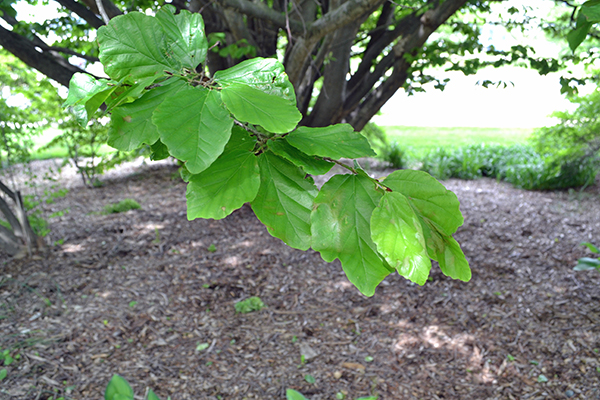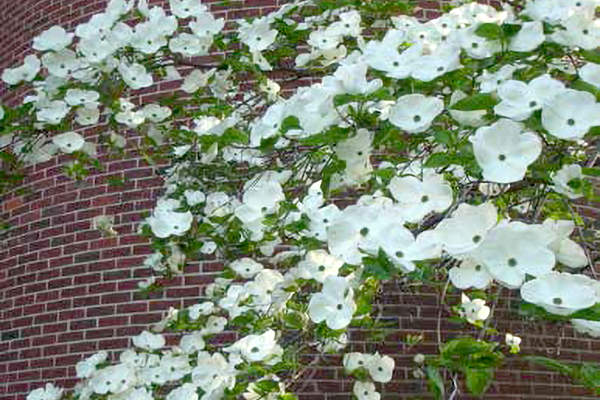If I were to travel to Persia (modern-day Iran) and bring back one souvenir of the botanic interests there, I think seeds of the magnificent Parrotia persica (Persian Ironwood) would be top on my list. That is if the USDA would allow me to bring plant material into this country, and I were patient enough to grow a tree from seed. Thankfully, Parrotia persica, with its stunning fall color and mottled bark, is not uncommon in the nursery trade. So a horticulturist with an eye for an interesting plant need not break the law or even be patient enough to grow it from seed, because it is readily available and a moderately fast-growing plant.
The Persian Ironwood’s sister, on the other hand, Parrotia subaequalis (Chinese Parrotia), has equal horticultural value, but might be more difficult to source. The Chinese Parrotia was described only as a unique species within the last 20 years, but diverged from Parrotia persica almost 8 million years ago. This long history has allowed the two species to separate and call different corners of the globe home, but both belong to the witch hazel family (Hamamelidaceae), and share attributes with some of the other ornamental genera in that family. Persian Ironwood is native to Iran and Azerbaijan, and Chinese Parrotia is found in five isolated locations in China. Though the native ranges for both are thousands of miles from the Delaware Valley, both are fully hardy in this region.
The refined horticulturist will appreciate the subtle red flowers of Parrotia persica in February (winter blooming is a common trait in the Hamamelidaceae). The new leaves in spring have a ruby tint and emerge into emerald green for summer. Fall is a spectacular time for the Persian Ironwood as the leaves turn any color from gold, to orange, and even crimson. The autumnal coloration is consistently a good show. After the leaves drop, Persian Ironwood has one more attribute to keep us enthralled through winter, the bark. The flat bark is mottled with green, white, brown, gray and even some rust coloration. This pattern on multi-stemmed mature specimens adds beauty to the garden when so much of the garden is resting.
Chinese Parrotia has similar aesthetics, but tends to be more compact. Some note that the bark on Chinese Parrotia is of higher ornamental quality than that of Persian Ironwood, but the Chinese Parrotia flowers more sparsely than Persian Ironwood. The Chinese Parrotia’s fall color is described as having shades of burgundy or purple in lieu of the gold-themed color matrix that Persian Ironwood exhibits.
Both the Chinese Parrotia and Persian Parrotia can be found in the trade, and Persian Parrotia has a handful of cultivars available, while Chinese Parrotia has an odd “named release” to help track the source material these plants were propagated from.
If all those attributes sound appealing for your home garden, I am happy to share that Persian Ironwood and Chinese Parrotia are not fussy plants to grow. Just site it in full sun or part shade, in soil that is fertile and moist. Acid soils bring out the best of the fall color. Once sited correctly, Parrotia will provide multi-season interest without much toiling from the gardener. An admirable glance towards its bark on a cold winter day and occasional pruning is enough to keep the Parrotia going strong.






